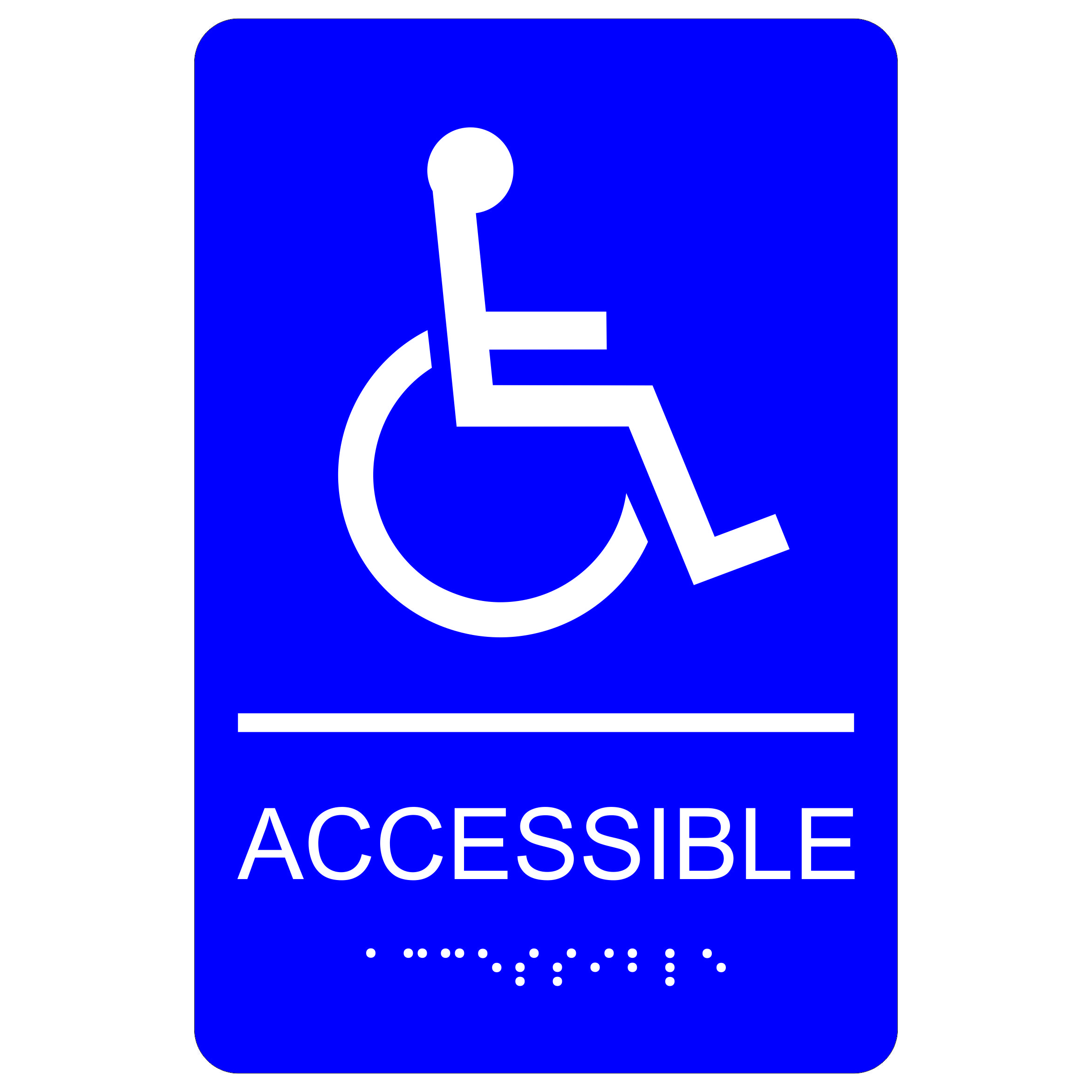Discovering the Secret Attributes of ADA Signs for Improved Access
In the realm of ease of access, ADA indicators work as quiet yet effective allies, guaranteeing that areas are accessible and inclusive for individuals with handicaps. By integrating Braille and responsive elements, these indicators break obstacles for the visually impaired, while high-contrast color design and legible font styles accommodate diverse aesthetic demands. In addition, their tactical placement is not arbitrary yet rather a computed initiative to facilitate smooth navigation. Yet, past these features exists a much deeper story concerning the development of inclusivity and the recurring commitment to producing fair rooms. What extra could these indications signify in our pursuit of global accessibility?
Importance of ADA Conformity
Guaranteeing conformity with the Americans with Disabilities Act (ADA) is crucial for cultivating inclusivity and equal gain access to in public areas and offices. The ADA, enacted in 1990, mandates that all public facilities, employers, and transportation services accommodate people with disabilities, guaranteeing they appreciate the exact same civil liberties and opportunities as others. Conformity with ADA requirements not only meets lawful commitments yet additionally improves an organization's online reputation by showing its dedication to variety and inclusivity.
One of the key elements of ADA compliance is the implementation of obtainable signs. ADA indicators are created to make certain that people with specials needs can quickly navigate with buildings and spaces.
Furthermore, adhering to ADA policies can reduce the risk of lawful consequences and potential penalties. Organizations that fall short to abide with ADA standards might face legal actions or penalties, which can be both monetarily burdensome and harmful to their public image. Therefore, ADA compliance is essential to fostering a fair atmosphere for everybody.
Braille and Tactile Components
The unification of Braille and tactile components into ADA signs personifies the concepts of ease of access and inclusivity. It is generally positioned underneath the equivalent text on signs to make sure that individuals can access the info without aesthetic help.
Tactile components prolong beyond Braille and include increased characters and symbols. These elements are designed to be discernible by touch, permitting people to determine area numbers, bathrooms, leaves, and various other crucial areas. The ADA sets certain guidelines concerning the size, spacing, and placement of these responsive elements to maximize readability and make sure uniformity across various settings.

High-Contrast Color Design
High-contrast color design play an essential role in improving the visibility and readability of ADA signs for people with aesthetic problems. These schemes are important as they optimize the distinction in light reflectance between text and history, making sure that indicators are easily discernible, also from a distance. The Americans with Disabilities Act (ADA) mandates the usage of details shade contrasts to fit those with minimal vision, making it a vital element of conformity.
The effectiveness of high-contrast colors depends on their capability to attract attention in different lights conditions, including dimly lit settings and locations with glare. Commonly, dark text on a light background or light message on a dark history is used to attain optimal contrast. Black message on a yellow or white history offers a stark visual distinction that helps in fast recognition and understanding.

Legible Fonts and Text Dimension
When thinking about the layout of ADA signage, the choice of understandable typefaces and proper message dimension can not be overemphasized. The Americans with Disabilities Act (ADA) mandates that fonts should be sans-serif and not italic, oblique, manuscript, very decorative, or of unusual form.
According to ADA guidelines, the minimum text elevation should be 5/8 inch, and it should raise proportionally with seeing distance. Consistency in message size adds to a cohesive visual experience, helping individuals in browsing environments effectively.
In see post addition, spacing in between lines and letters is integral to clarity. Adequate spacing stops characters from appearing crowded, boosting readability. By sticking to these requirements, designers can dramatically improve availability, making certain that signage serves its intended function for all people, despite their aesthetic capabilities.
Reliable Positioning Strategies
Strategic placement of ADA signs is important for optimizing availability and ensuring compliance with lawful criteria. ADA standards specify that signs ought to be mounted at an elevation in between 48 to 60 inches from the ground to guarantee they are within the line of sight for both standing and seated individuals.
In addition, indications have to be positioned beside the latch side of doors to permit easy identification prior to access. This positioning assists individuals locate rooms and areas without blockage. In situations where there is no door, indicators ought to be situated on the nearby surrounding wall. Uniformity in indicator placement throughout a center boosts predictability, lowering complication and boosting general individual experience.

Final Thought
ADA signs play an essential duty in promoting availability by incorporating features that resolve the needs of people with specials needs. These aspects collectively promote a comprehensive setting, underscoring the importance of ADA conformity in making certain equivalent access for all.
In the realm of availability, ADA indicators serve as quiet yet effective allies, ensuring that rooms are comprehensive click to find out more and accessible for individuals with disabilities. The ADA, passed in 1990, mandates that all public centers, companies, and transportation services fit people with impairments, ensuring they delight in the exact same civil liberties and possibilities as others. ADA Signs. ADA indications are developed to ensure that people with impairments can quickly browse with buildings and areas. ADA guidelines specify that indications must be installed this hyperlink at an elevation between 48 to 60 inches from the ground to ensure they are within the line of sight for both standing and seated individuals.ADA indicators play an essential function in advertising accessibility by integrating functions that address the requirements of people with handicaps
Comments on “A Comprehensive Guide to Selecting the Right ADA Signs”